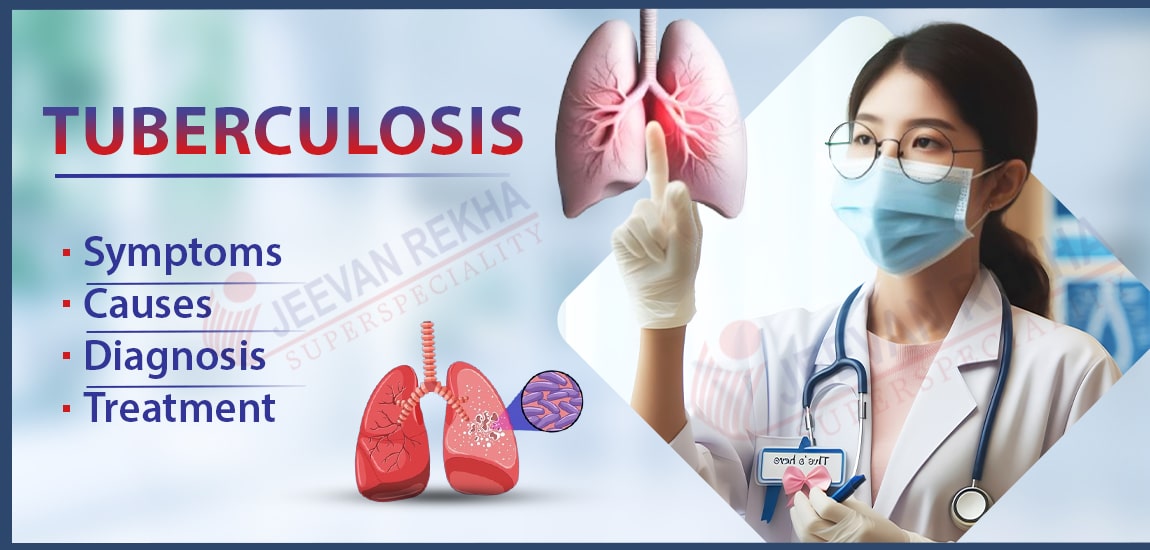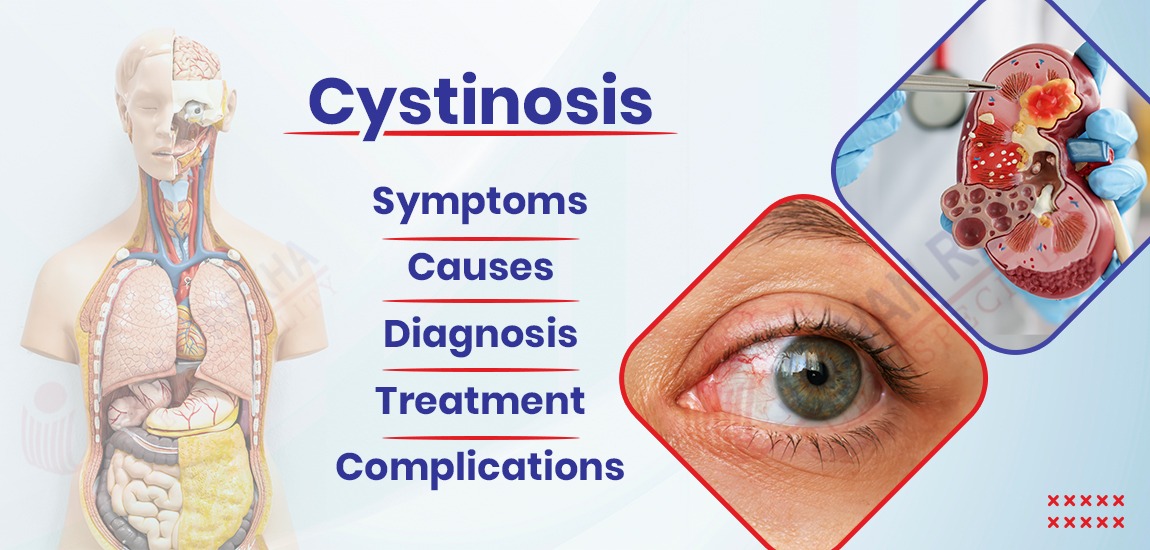
- By jrsh admin
- In Health and Tips,
- Posted September 20, 2024
Tuberculosis: Causes, Symptoms, Diagnosis & Treatment
What is Tuberculosis?
Tuberculosis (TB) is a contagious bacterial infection primarily caused by Mycobacterium tuberculosis, which typically affects the lungs but can also target other parts of the body, such as the kidneys, spine, and brain.
Tuberculosis spreads through the air when an infected person coughs, sneezes, or talks, releasing tiny droplets containing the bacteria. Symptoms of active tuberculosis can include a lasting cough, chest pain, unintentional weight loss, fever, and night sweats.
While many people may be infected with the bacteria without developing active disease, this latent TB can become active under certain conditions, particularly when the immune system is weakened. Effective treatment is available, often involving a prolonged course of antibiotics, making early diagnosis and intervention critical for controlling the spread of the disease and ensuring successful recovery.
Types of Tuberculosis
Tuberculosis (TB) can be categorized into several types based on its location in the body and the nature of the infection. Here are the main types:
1. Pulmonary Tuberculosis: The most prevalent type, which impacts the lungs, presents symptoms such as a persistent cough, chest pain, and coughing up blood.
2. Extrapulmonary Tuberculosis: Occurs when TB spreads beyond the lungs to other parts of the body, such as:
- Lymphatic TB: Affects the lymph nodes.
- Pleural TB: Involves the pleura, the lining around the lungs.
- Skeletal TB: Affects bones and joints, often the spine (Pott’s disease).
- Genitourinary TB: Affects the kidneys, bladder, and reproductive organs.
- Meningeal TB: Involves the membranes covering the brain and spinal cord.
3. Latent Tuberculosis: A state where the TB bacteria are present in the body but inactive, causing no symptoms and not being contagious. It can potentially become active later.
4. Active Tuberculosis: Refers to cases where the bacteria are actively multiplying, leading to symptoms and the potential to spread the infection to others.
You can read also:- Hiatal Hernia: Symptoms, Causes, Diagnosis and Treatment
Causes of Tuberculosis
Tuberculosis (TB) is primarily caused by the bacterium Mycobacterium tuberculosis. Here are the main causes of tuberculosis are:
- Bacterial Infection: The primary cause is the inhalation of airborne droplets containing the bacteria from an infected person who coughs, sneezes, or talks.
- Weakened Immune System: Individuals with compromised immune systems, such as those with HIV/AIDS, diabetes, malnutrition, or undergoing immunosuppressive treatments, are at a higher risk of developing active TB.
- Close Contact: Living or spending time in close quarters with someone who has active TB increases the likelihood of transmission.
- Poor Living Conditions: Overcrowded environments, inadequate ventilation, and lack of access to healthcare can facilitate the spread of TB.
- Substance Abuse: Alcoholism and drug use can impair immune function, making individuals more susceptible to TB.
- Chronic Health Conditions: Conditions like chronic lung disease or kidney disease can increase vulnerability to infection.
- Geographic Factors: TB is more prevalent in certain regions, especially in developing countries with higher rates of poverty and limited healthcare access.
You can read also:- COPD: Causes, Symptoms, Diagnosis, Treatment & Prevention
Symptoms of Tuberculosis
Symptoms of tuberculosis (TB) include:
- Persistent Cough: Lasting more than three weeks, often with blood or sputum.
- Chest Pain: Discomfort or pain while breathing or coughing.
- Weight Loss: Unexplained weight loss or loss of appetite.
- Fever: Low-grade fever, often accompanied by chills.
- Night Sweats: Excessive sweating during the night.
- Fatigue: General feelings of tiredness and weakness.
Diagnosis of Tuberculosis
Diagnosing tuberculosis (TB) involves several methods to confirm the presence of the bacteria. Key diagnostic steps include:
- Medical History and Physical Exam: A thorough assessment of symptoms and risk factors, including exposure history and health background.
- Skin Test: The Mantoux tuberculin skin test involves injecting a small amount of purified protein derivative (PPD) under the skin. A positive reaction indicates exposure to TB bacteria.
- Blood Tests: Interferon-gamma release assays (IGRAs) measure the immune response to TB proteins in a blood sample, helping to detect latent or active TB.
- Chest X-ray: Imaging is used to identify abnormalities in the lungs that suggest active TB disease.
- Sputum Tests: Samples of mucus (sputum) are examined under a microscope and cultured to detect the presence of TB bacteria. This can include acid-fast bacilli (AFB) staining and cultures.
- Molecular Tests: Nucleic acid amplification tests (NAAT) can quickly detect TB DNA in sputum samples, providing rapid results.
- Biopsy: In cases of extrapulmonary TB, a biopsy of affected tissue may be performed for further analysis.
How is tuberculosis treated?
Treating tuberculosis (TB) typically involves a combination of antibiotics taken for an extended period. The standard treatment regimen includes:
1. Antibiotics: The most common drugs used are:
- Isoniazid
- Rifampin
- Ethambutol
- Pyrazinamide These medications are usually prescribed in combination to prevent resistance and are taken for at least six to nine months.
2. Directly Observed Therapy (DOT): This approach involves a healthcare provider supervising the patient while they take their medication to ensure adherence and complete the treatment course.
3. Managing Side Effects: Monitoring for and addressing potential side effects from the medications is crucial. Regular follow-up appointments help manage any adverse effects.
4. Treatment for Latent TB: Individuals with latent TB may receive a shorter course of treatment, usually involving isoniazid or rifampin, to prevent progression to active disease.
5. Supportive Care: Nutritional support, education about the disease, and addressing coexisting health conditions are important for overall recovery.
6. Monitoring and Follow-up: Regular check-ups and sputum tests help track treatment progress and ensure the infection is cleared.
Conclusion
Jeevan Rekha Hospital in Jaipur stands out as one of the best hospitals in Jaipur, dedicated to providing comprehensive care for a range of health conditions, including tuberculosis.
With a team of experienced medical professionals and state-of-the-art facilities, we prioritize patient well-being and effective treatment. Our commitment to quality healthcare ensures that patients receive the best possible outcomes through tailored treatment plans and ongoing support.
Trust Jeevan Rekha Hospital for your health needs and experience compassionate care in a leading healthcare facility.
Tags
Blog Search
Latest Posts
-
बर्ड फ्लू के लक्षण, कारण, उपचार और बचाव के उपाय जानें
December 04, 2025 -
Best Diet Plan for Menopause Weight Management
November 25, 2025 -
Pulmonary Fibrosis Treatment: Understanding Lung Scarring and Breathing Problems
November 21, 2025 -
Arrhythmia: Types, Causes, Symptoms, and Treatment
November 07, 2025 -
Silent Heart Attack: Causes, Symptoms and Treatment
October 24, 2025




